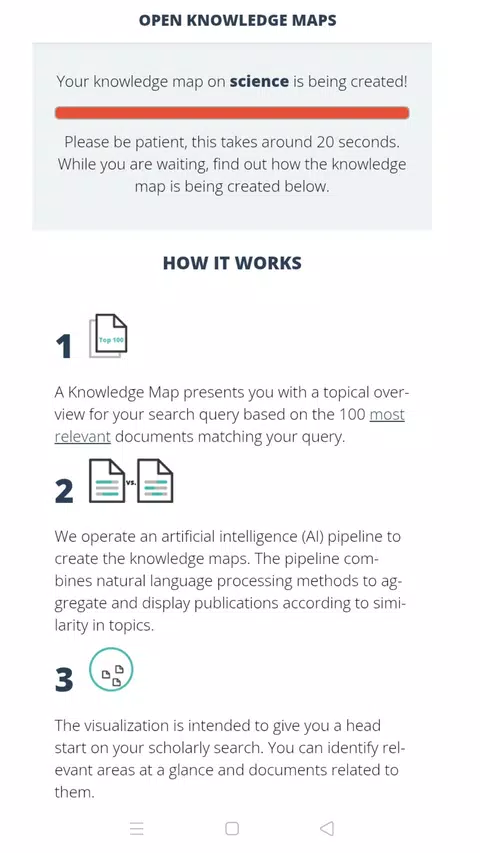
Open Knowledge Maps
Open Knowledge Maps
Visual Knowledge Maps
AI-Based Search Engine
Open Access Integration




Key Features of Open Knowledge Maps
Transform your experience with Open Knowledge Maps's main features.
Visual Knowledge Maps
Creates interactive visual overviews of research topics by clustering similar papers and concepts together, allowing users to see the main areas of a field at a glance
Explore features and benefits.
Experience innovation at hand.
Download and start using.
AI-Based Search Engine
Utilizes artificial intelligence to analyze and organize research papers from major academic databases like PubMed and BASE, covering over 100 million documents
Improved performance and stability.
Regular software updates.
Enhanced user experience.
Why choose Open Knowledge Maps
Streamline your life with Open Knowledge Maps today!
Open Access Integration
Highlights and provides easy access to open access documents, helping users identify freely available research papers without paywalls
Cross-Disciplinary Discovery
Enables search and visualization across multiple academic disciplines and languages, supporting interdisciplinary research and broader knowledge discovery
Document Export
Allows users to export selected documents to reference management systems, streamlining the research workflow and citation process
Reviews about Open Knowledge Maps
Discover our users' feelings and comments.
FAQs about Open Knowledge Maps
Browse the most frequently asked questions that you may interested in.
What is Open Knowledge Maps?
Open Knowledge Maps is a visual search engine and discovery tool that creates interactive knowledge maps from scientific literature. It's a non-profit organization that provides a visual interface to explore research topics by showing clusters of related papers and concepts, making it easier to get an overview of a research field.
Is Open Knowledge Maps free to use?
Yes, Open Knowledge Maps is completely free to use. It is a charitable non-profit organization built on open science principles, making scientific knowledge freely accessible to everyone.
Where does Open Knowledge Maps get its data from?
Open Knowledge Maps sources its data from trusted academic databases and repositories including BASE (with over 300 million documents from nearly 10,000 sources), PubMed, and OpenAIRE. It only includes content from verified academic sources.
How do knowledge maps work?
Knowledge maps are automatically generated using AI and natural language processing to analyze the 100 most relevant documents for a search query. Similar papers are grouped together into clusters, with key concepts labeled. The visualization shows relationships between different research areas and highlights open access content.
What are the limitations of Open Knowledge Maps?
The main limitation is that each map only includes the top 100 documents from the selected data source, which may miss some important papers. The quality also depends on the algorithm, scope of the data source, and quality of metadata. The organization is working on enabling users to manually add documents to maps in the future.
How can I cite a knowledge map?
You can cite a knowledge map by clicking the 'cite' button on the left side of each map. For citing the website and search functionality, use: Open Knowledge Maps (2019).
Start your free trial for Open Knowledge Maps today!
Enjoy your everyday with Open Knowledge Maps.
Let's keep in touch!
Subscribe to our newsletter for the latest news and updates.
By subscribing, you agree to Open Knowledge Maps Privacy Policy.


